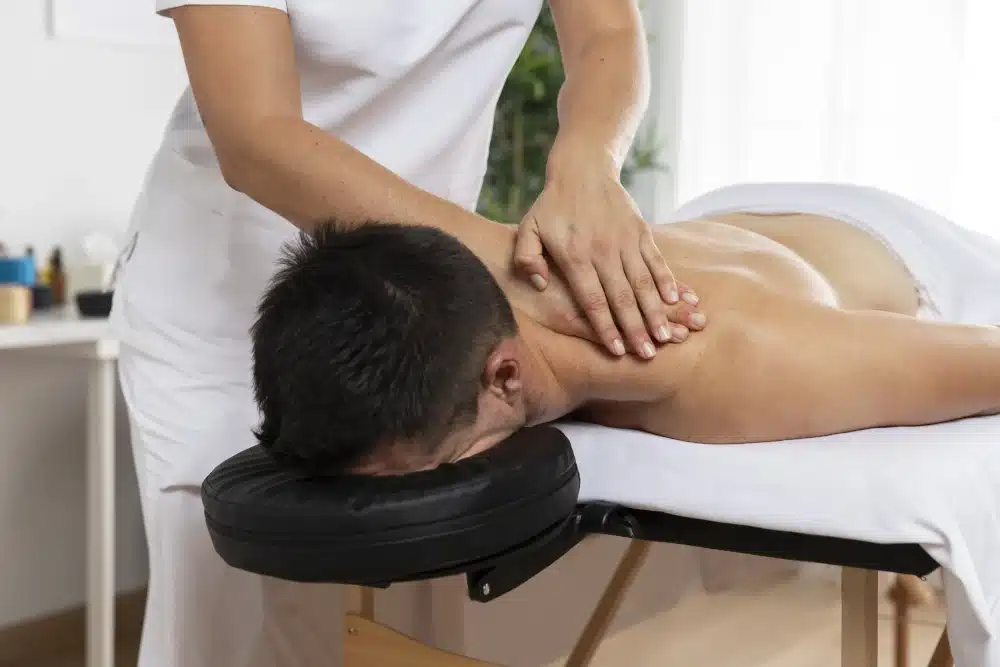In the dynamic world of sports medicine, where athletes constantly push their bodies to the limits, the importance of effective recovery and injury prevention cannot be overstated. Neuromuscular massage therapy has emerged as a valuable tool in sports medicine, offering athletes a non-invasive and holistic approach to optimizing performance, accelerating recovery, and preventing injuries. In this comprehensive guide, we explore the principles, benefits, techniques, and applications of neuromuscular massage therapy in sports medicine.
Understanding Neuromuscular Massage Therapy
Neuromuscular massage therapy, also known as trigger point therapy or myofascial release, is a specialized form of massage that targets specific points of tension within the muscles and connective tissues. These points, known as trigger points or knots, can cause pain, restricted movement, and muscle imbalances when left untreated. Neuromuscular massage therapy aims to alleviate these issues by applying sustained pressure to trigger points, releasing tension, improving blood flow, and restoring optimal function to the affected muscles.
Principles of Neuromuscular Massage Therapy
1. Trigger Point Identification
The first step in neuromuscular massage therapy is identifying trigger points within the muscles. These points are often characterized by localized tenderness, referred pain patterns, and restricted movement. A skilled therapist will use palpation techniques to locate trigger points and assess their severity and sensitivity.
2. Trigger Point Release
Once trigger points are identified, the therapist applies sustained pressure to these areas using fingers, thumbs, elbows, or specialized tools. This pressure helps deactivate the trigger points, release tension in the muscle fibers, and promote relaxation and healing.
3. Myofascial Release
In addition to trigger point therapy, neuromuscular massage therapy often incorporates myofascial release techniques. Fascia, the connective tissue that surrounds muscles, can become tight and restrictive, contributing to pain and dysfunction. Myofascial release involves gentle stretching and manipulation of the fascia to release tension and improve flexibility.
Benefits of Neuromuscular Massage Therapy in Sports Medicine
1. Pain Relief
One of the primary benefits of neuromuscular massage therapy is pain relief. By targeting trigger points and releasing tension in the muscles, massage therapy can alleviate chronic pain, acute injuries, and overuse injuries common in athletes.
2. Improved Flexibility and Range of Motion
Restricted movement and muscle stiffness can impair athletic performance and increase the risk of injury. Neuromuscular massage therapy helps improve flexibility and range of motion by releasing tight muscles and fascia, allowing athletes to move more freely and efficiently.
3. Accelerated Recovery
After intense training sessions or competitions, athletes often experience muscle soreness and fatigue. Neuromuscular massage therapy promotes faster recovery by enhancing blood flow, reducing inflammation, and flushing out metabolic waste products from the muscles.
4. Injury Prevention
Preventing injuries is paramount in sports medicine, and neuromuscular massage therapy plays a crucial role in injury prevention. By addressing muscle imbalances, correcting biomechanical issues, and reducing tension in the muscles, massage therapy helps minimize the risk of strains, sprains, and overuse injuries.
5. Enhanced Performance
Optimizing performance is a key goal for athletes, and neuromuscular massage therapy can help achieve this by improving muscle function, enhancing neuromuscular coordination, and reducing the impact of fatigue on performance.
Techniques Used in Neuromuscular Massage Therapy
Neuromuscular massage therapists employ a variety of techniques to address trigger points and release tension in the muscles. Some of the most commonly used techniques include:
- Static Pressure: Applying sustained pressure to trigger points to release tension and deactivate the points.
- Stripping: Using firm pressure along the length of the muscle fibers to release adhesions and improve flexibility.
- Cross-Fiber Friction: Applying pressure across the direction of the muscle fibers to break up scar tissue and adhesions.
- Stretching: Incorporating passive and active stretching techniques to lengthen muscles and improve flexibility.
- Compression: Applying pressure to larger muscle groups to improve circulation and promote relaxation.
Applications of Neuromuscular Massage Therapy in Sports Medicine
Neuromuscular massage therapy is widely used across various sports and athletic disciplines, including:
- Team Sports: Athletes in team sports such as football, basketball, and soccer benefit from neuromuscular massage therapy to improve performance, prevent injuries, and aid in recovery.
- Endurance Sports: Long-distance runners, cyclists, and triathletes utilize massage therapy to manage fatigue, prevent overuse injuries, and promote recovery between training sessions and competitions.
- Combat Sports: Athletes in combat sports like boxing, MMA, and wrestling rely on massage therapy to address muscle soreness, reduce tension, and enhance flexibility, contributing to improved performance and injury prevention.
- Individual Sports: Athletes in individual sports such as tennis, golf, and gymnastics incorporate massage therapy into their training regimens to maintain optimal physical condition, address specific biomechanical issues, and prevent injuries.
Conclusion
Neuromuscular massage therapy is a valuable and versatile tool in sports medicine, offering athletes a natural and effective way to optimize performance, accelerate recovery, and prevent injuries. By targeting trigger points, releasing tension in the muscles, and promoting relaxation and healing, massage therapy helps athletes maintain peak physical condition and achieve their performance goals. Whether you are a professional athlete, weekend warrior, or fitness enthusiast, incorporating neuromuscular massage therapy into your training regimen can enhance your overall well-being and athletic performance. Consult with a qualified massage therapist specializing in sports medicine to experience the benefits of this holistic approach to health and wellness.
At As Designed Wellness in Dana Point, you may inquire about neuromuscular massage therapy. To receive help with your problem, you can speak with the clinic’s expert. We can schedule an appointment in advance over the phone at (949) 412-6815 or by using this form.

